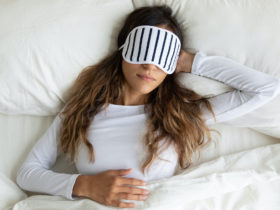This post may contain affiliate links, which provide a small commission to us when you purchase, at no additional cost to you. Thank you for helping to support our efforts in providing you the best, most up-to-date information for GloWell.
Green tea is having a moment. (It must have hired kale’s PR peeps.)
The health-hype alone is enough for some to brew up a few cups a day.
But what happens if you’ve tried the green stuff and find … you’re just not into it?
It doesn’t matter if you use loose leaf tea or those little sachets. No matter what you do, it always tastes the same.
“Healthy.”
But hey! That’s what it’s supposed to taste like, isn’t it?
It’s the healthiest stuff that always tastes the worst. (That’s why kale hired that PR team in the first place.)
Well, no.
Green tea isn’t supposed to taste bad.
When properly brewed, green tea should have a delicate, floral, or even nutty flavor. But, more on that later.
Green tea is so much more than a mug — or cup — of hot, flavored water. It’s a health-supporting powerhouse!
Let’s find out a little bit more about the most popular tea in the world and why you should be drinking it on the regular.
But first…
A (Very) Brief History of Green Tea
You know how some of the best things in life often happen by pure chance?
Like taking a chance on a weird squash at the grocery store and discovering it makes your tastebuds sing. Or moving across the country on a whim (oh, yes, that can be accidental and wonderful).
Well, that’s how green tea was discovered.
By chance.
Way, way back in the 2730’s BC, Chinese Emperor Shennong boiled some drinking water under a Camellia Tree — or Camellia sinensis — what we now know as the green tea plant.
According to Chinese legend, a dried leaf from the tree fell into Emperor Shennong’s pot, turning it a warm golden color.
The Emperor drank it, loved it, and voila!
The first-ever pot of tea.
Personally, I don’t know many people who would still drink that water after a random leaf fell into it, but — fortunately for us all — Emperor Shennong was like, “why the heck not? What could possibly happen?”
Tea happened.
Why You Should Be Drinking It
You’ve probably heard that green tea has both antioxidant and anti-inflammatory properties, but does it really deserve its “superstar” functional-food status?
It turns out, green tea can do some pretty amazing things.
Green tea has been heavily researched for its health-promoting effects, such as:
- Improved brain function
- Osteoporosis prevention
- Prevention of tooth decay
- Weight loss and weight management
- Anti-aging beauty benefits
- Lowers bad cholesterol
Green tea contains L-Theanine, which can not only help to improve cognitive functions — like decision making — but may also help ease anxiety and depression.
With all of these research-backed health benefits, why aren’t you drinking three cups a day?
Oh, that’s right.
It’s bitter.
Why is Green Tea So Bitter?
Raise your hand if you’ve ever excitedly brought home a box of green tea (look how healthy you are!) only to be bitterly disappointed when it comes out tasting a little too “healthy”.
You know the benefits of green tea, but it’s so bitter that you only do it when you feel like you really “need” the extra antioxidant boost.
And even when you do, you load it up with sugar or honey to cut the bitterness — most likely counteracting its healthy effects.
Remember how I said that it’s supposed to have a light, floral taste?
I wasn’t kidding.
Green tea can be delicious.
So, why is yours bitter?
Are you ready to be let in on a life-changing secret?
You’re Brewing It Wrong
In fact, you’re most likely burning it.
How?
- Your water is too hot
- You’re steeping it for too long
- You’re using lower quality tea bags with broken leaves
- You’re brewing too much tea — especially if you’re using loose leaf tea
All of these things can cause your tea to be bitter, astringent, and just plain challenging to drink.
You see, the tea leaves you’re using are dried — obviously — which causes them to shrink. So, guess what happens when they hit the water?
If you guessed they expand, you’d be correct!
Tea leaves expand even inside a tea bag. Using too much can overcrowd the tea, releasing too many tannins into the water, making your tea astringent.
Astringency is that dry, almost rough feeling on your tongue when you eat or drink certain things like dry cinnamon, certain red wines, or unripened fruit. Astringency can come off as a bitter flavor even though it’s really not a flavor at all.
Overcrowding is just one reason your tea tastes bitter.
If your water is too hot or you’re brewing it for too long, your green tea will be ruined regardless of whether or not you’ve overcrowded it.
Some teas — like white, green, and oolong — are incredibly sensitive to high temperatures. Even steeping your tea for too long can cause it to burn, creating that bitter taste you know and don’t love.
But, wait, the instructions on the box say to boil some water and steep for 5 minutes!
The instructions are wrong, too.
I couldn’t begin to tell you why. Once you understand how green tea is supposed to be brewed, those instructions on most boxes make even less sense.
It’s almost disrespectful.
How to Brew the Perfect Cup of Green Tea
Want to experience the health benefits of green tea and enjoy its delightful, delicate flavor? Here’s how to brew it right:
If you’re using loose leaf tea, you only need about 1tsp of tea leaves per 8oz of water.
If you place your loose leaf tea in a tea infuser, even 1tsp may be too much. Try cutting that to ½ tsp for better, less astringent, results.
The right amount of tea is only half the battle. Brewing time and temperature are just as important.
Any tea guru worth their matcha will recommend only brewing green tea for two minutes in water that’s between 167° and 175°F.
Tip: you can even brew the same tea bags or loose leaves up to three times to get the full antioxidant power of the leaves.
Let’s break it down:
- Don’t overcrowd your tea — you only need 1 tsp of tea for an 8 oz cup
- Water temperature between 167° and 175° (depending on your altitude)
- Brew for two minutes
You don’t need specific “tea makers” or specialty equipment to get the perfect cup of green tea.
You may find an electric kettle a wise tea-making investment, and an all-around multi-tasking kitchen tool.
Or try a french press. (Just don’t push the plunger down like you would with coffee. That could crush the leaves and — surprise, surprise — make it bitter.)
Green tea is more than a nutritious beverage. It can be a delightfully tasty drink to enjoy throughout your day!
So, what are you waiting for?
Go put the kettle on already!
Pssst! Want to know our favorite green tea? Pu’er Green Tea from Pique. Drink pu’er green tea before your activity to help release additional bursts of energy while catechins work to help improve your metabolic rate. You can save 15% off + free shipping for life and get a complimentary starter kit (glass beaker + Pique frother) when you start your new ritual.











Join the GloWell Community on Social!
Don't risk missing a single thing. Follow us on social and become part of the GloWell community.